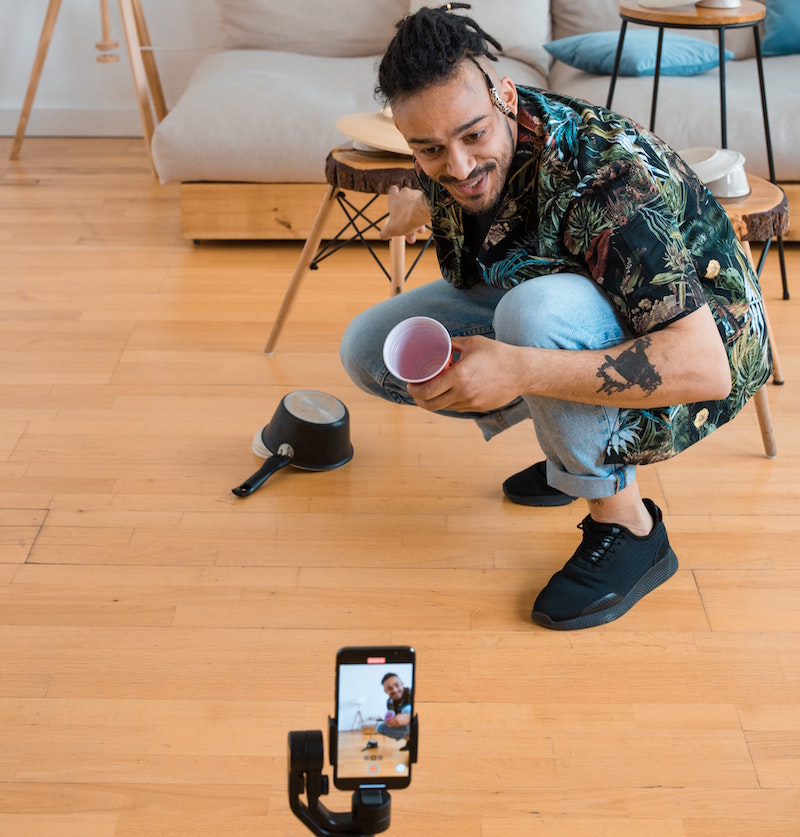Despite the Covid-19 pandemic’s negative impacts, it has also created incredible opportunities for brands to make meaningful connections with consumers. It’s a time for brands to show a bit more of their personality and put away the hard sell for a little while.
I’ve been reading up on a few social trends that have formed over the last 18 months and how brands can tap into them.
The hard lockdown has forced society to change opinions about screen time and social media having a negative effect on relationships when it suddenly became our only form of communication. Overnight, video communication became mainstream, and Zoom was a household name. Young and old were forced to adapt to new ways of communicating. Grandma now attends her book club on Zoom and kids attend school via Google Hangouts. Social media brands were quick to react with Facebook adding a ‘care’ emoji to their suite of reactions and TikTok let users send each other gifts.
Many in the entertainment industry found their livelihoods decimated overnight and moved their shows online, doing small intimate shows where fans could interact with celebrities in a more intimate setting. This speaks to a broader trend of users connecting more immediately with creators via social media.

Consumers are now more open to engaging with brands in the social space, especially brands that humanise their digital communication. Considering this, brands should be using the opportunity to facilitate more intimate connections with customers through more empathetic tonality in their messaging and humanising/personalising their customer service in the digital space.
Ikea in Italy ran a series of Instagram Live events with staff members in store, Gucci sent their invitations to Milan Fashion week via WhatsApp in the form of a voice note from creative director Alessandro Michele.
The way the world protested changed in 2020. Activism was restricted due to lockdown regulations, but people found a new way to voice their opinions and drive social change via social media. Suddenly, issues that affected one country could result in a global movement for change.
Nowhere was this more evident that with the death of George Floyd and the global protest that ensued standing in solidarity with Black Lives Matter. Now is the time some brand introspection to assess if and how they are contributing to issues like racial bias, injustices and global climate change. Consumers are now holding brands accountable for more than just their product offering, consumers are evaluating brands based on their impact on the environment and how they treat their staff.
Brands can choose to join the conversation by standing up for a cause, like P&G did with their campaign ‘The Look’ which took a stand against black discrimination. Brands that show they are not just self-serving but are there for their community, will resonate more with consumers of today.
The other exciting trend we are seeing is that there are now more opportunities for brands and their consumers to collaborate on content creation. The rise of TikTok in 2020, gave social media users the ability to not just consume but co-create and other social media platforms have followed suit.
#Challenges offer a space where users can create and recreate content around a theme. Brands can participate by creating their own #challenges or aligning themselves to existing challenges. Samsung’s #VideoSnapChallenge for the Samsung S1, is the largest challenge to date with over 27 billion views. Brands should be looking for opportunities to foster creativity within their audiences.

If possible, brands can even create their own tools for their audiences to create with. Korean beauty brand, Glow Recipe (left), launched a private Instagram handle so that its customers can have direct input on the product development and have a direct communication with the brand.
If you would like to read more about this, then check out We are Social’s Think Forward Report 2021.

Nicole van Blerk is a senior planner at Meta Media and has been working in the Cape Town media industry for over 10 years.














